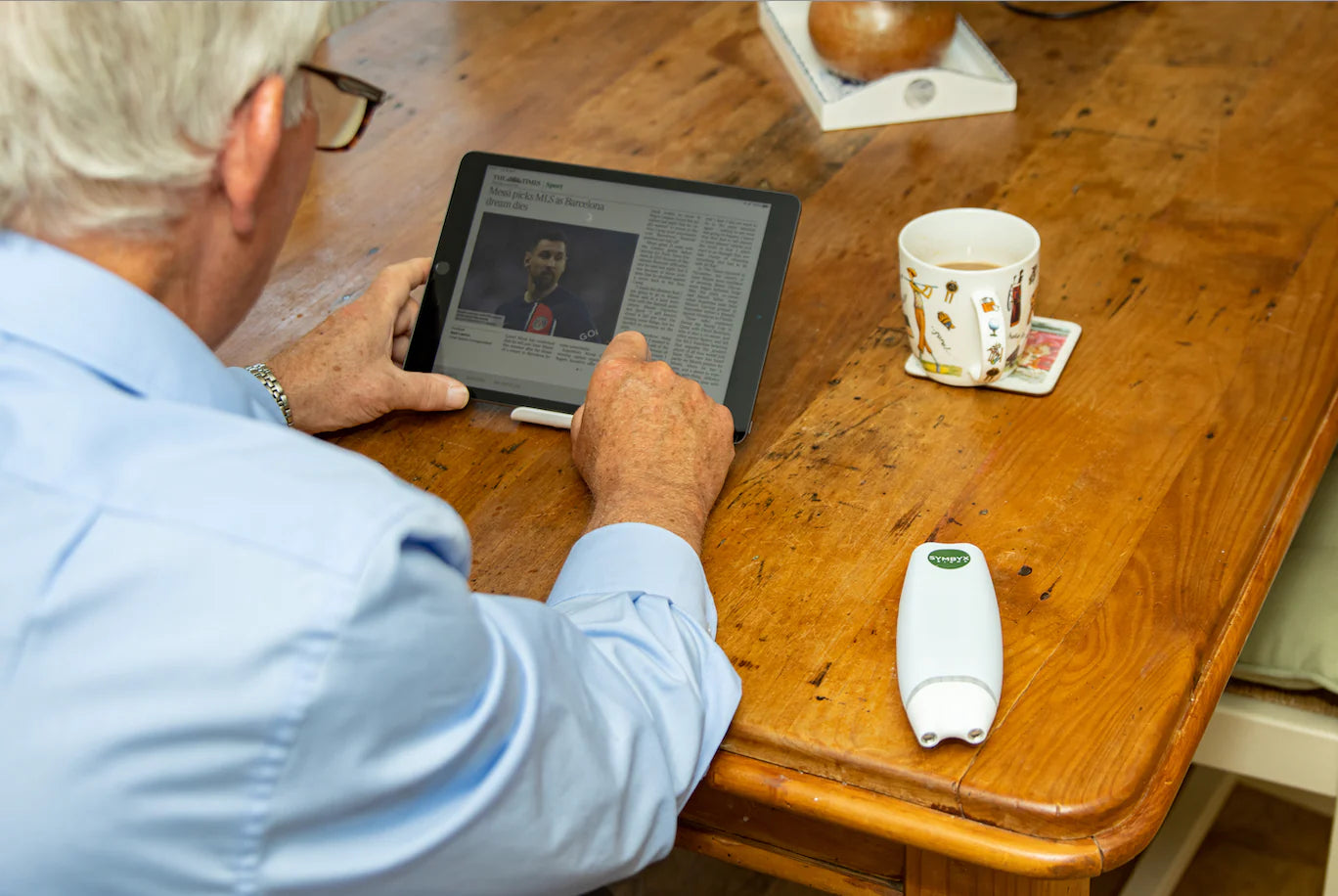International neurology journal notes positive improvements in Parkinson’s trial: SYMBYX
August 2021
SYMBYX, an Australian med-tech company developing laser light therapies to reduce Parkinson’s symptoms, said it welcomed the publication of key findings from its Adelaide clinical trial in the leading BMC Neurology Journal.
The journal published results of the 52-week trial involving two groups of patients that showed improvements across a range of motor and non-motor skills. Parkinson’s South Australia (PSA) partially funded the trial.
The trial involved the use of light therapy, known as photobiomodulation (PBM), which is being investigated by SYMBYX to treat a range of neurodegenerative conditions, the most notable and promising of which is the management of Parkinson’s symptoms.
Dr Ann Liebert, SYMBYX’s chief scientist and adjunct senior lecturer at the Department of Medicine at the University of Sydney, coordinated the trial. SYMBYX chief executive Dr Wayne Markman said the trial showed that light therapy is capable of improving symptoms.
Parkinson’s disease is a currently incurable, progressive neurological condition caused by a lack of dopamine, a chemical produced by the brain to help initiate and control body movement. Symptoms can include muscle rigidity, tremor, difficulty walking as well as depression, anxiety, difficulty swallowing and loss of sense of smell.
It affects between 10 and 15 million people worldwide. It is more prevalent than prostate, bowel and many other forms of cancer and the total number of Parkinson’s sufferers is four times the number of people suffering with MS.
“Parkinson’s disease is now the world’s fastest growing neurological disease,” Dr Markman said. “This is a promising trial that provides a clear impetus for additional higher-level trials.”
The SYMBYX trial, conducted in Adelaide with the support of Parkinson’s SA, involved two small groups of patients, all diagnosed with Parkinson’s disease by a neurologist. Participants used the laser light device in a clinical setting for 12 weeks, and then a further 40 weeks from home.
Patients were assessed before the trial started and again through the year-long treatment period. The devices used were medical-grade lasers, containing diodes manufactured in Sweden under exclusive licence to SYMBYX.
The trial aimed to assess the effectiveness of light therapy by SYMBYX to mitigate clinical signs of Parkinson’s disease, in a prospective proof-of-concept study. It is a precursor to a larger randomized placebo-controlled trial (RCT), to be conducted later this year.
The results, published in the BMC Neurology journal, found that measures of mobility, cognition, dynamic balance and fine motor skill were significantly improved with PBM treatment for 12 weeks and up to one year.
“Many individual improvements were above the minimal clinically important difference, the threshold judged to be meaningful for participants,” the research states. “Individual improvements varied but many continued for up to one year with sustained home treatment. No side effects of the treatment were observed.”
The journal also noted that: “PDCare Laser was shown to be a safe and potentially effective treatment for a range of clinical signs and symptoms of PD. Improvements were maintained for as long as treatment continued, for up to one year in a neurodegenerative disease where decline is typically expected.
“Home treatment of PD by the person themselves or with the help of a carer might be an effective therapy option. The results of this study indicate that a large RCT is warranted.”
“SYMBYX is about to start preparations for the next big trial, a randomized placebocontrolled trial with a longer follow-up period,” he said.
The Adelaide study importantly noted no adverse side effects and that PBM or light therapy was shown to be “a safe and potentially effective treatment”.
SYMBYX devices use non-thermal (heating) laser lights directed to the patient’s gut to promote increased dopamine production. “What most people don’t know is that about half of our dopamine actually comes from the gut,” Dr Markman said. “Using SYMBYX hand-held lasers and treatment protocols, patients are able to stimulate their gut microbiome to take over and do some of the heavy lifting, in terms of dopamine manufacturing,” he said.
A full copy of the BMC Neurology Journal report can be sent to you via emailing us at info@symbyxbiome.com
Dr Markman is available for interview.
For media inquiries, please contact our team by emailing info@symbyxbiome.com or calling +61 2 8066 9966

